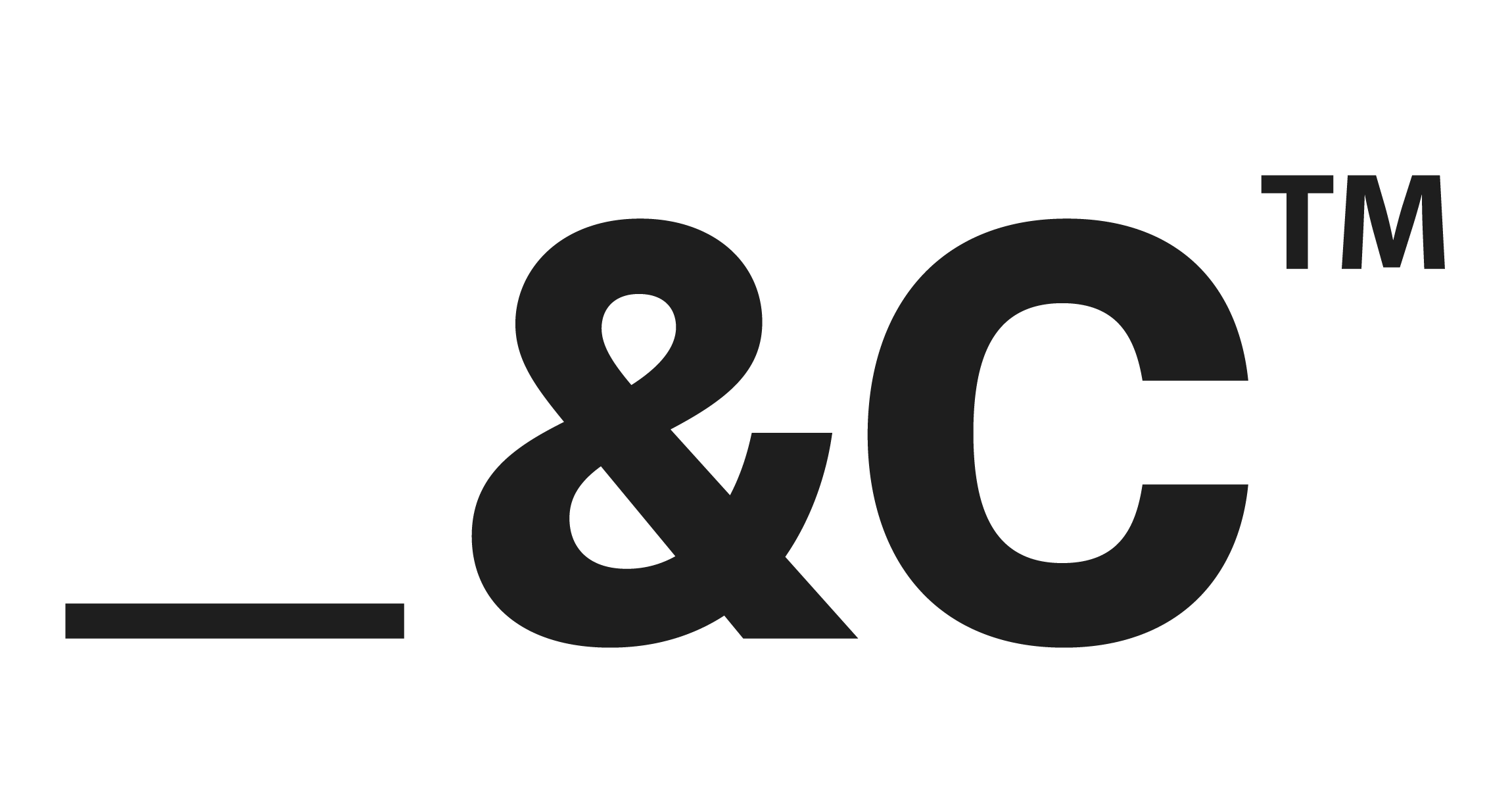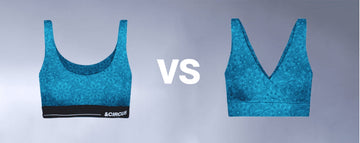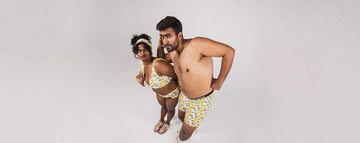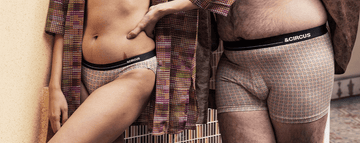Quick Listen:
Walk into any department store today, and the innerwear section tells a story far bigger than bras and briefs. It's a narrative of transformation, where the once-narrow world of lingerie and underwear is stretching quite literally to embrace every body, identity, and need. From adaptive designs for people with disabilities to gender-neutral collections that defy outdated norms, the innerwear industry is undergoing a quiet revolution. And it's not just about who's wearing what. It's about who feels seen.
Uncomfortable underwear shouldn't steal your confidence. At Andcircus, we craft ultra-soft, sustainable Lenzing Modal Micro® innerwear for every body, XS to 5XL. From briefs to bras, our custom packs fit you perfectly. Shop risk-free with our 100% satisfaction guarantee and embrace comfort that includes everyone. #LoveEveryBody. Shop Now!
Diversity Initiatives Reshape Innerwear Industry Standards
The global intimate wear market, valued at USD 93.34 billion in 2023, is projected to reach USD 149.84 billion by 2032, growing at a compound annual growth rate (CAGR) of 5.4%. This isn't just a boom in sales it's a shift in values. Consumers, particularly younger ones, are demanding more than just comfort and aesthetics. They want brands to reflect their realities: diverse bodies, fluid identities, and a commitment to sustainability. Innerwear, that “second skin” worn closest to the body, is now expected to align with personal and ethical identities, balancing temperature, texture, and motion in ways that feel both intimate and inclusive.
Brands are listening. Gone are the days when a single retailer, like Victoria's Secret, could dominate with a one-size-fits-most approach to beauty. That retailer, which once held a 32% market share in 2015, saw it slip to 19% by 2020, according to NPD Group data. The decline wasn't just about scandals or misconduct allegations it was a sign that consumers craved something more authentic. Enter a new wave of innerwear companies, many leveraging eco-friendly materials like micromodal, a soft, breathable fabric derived from beech trees, to craft garments that feel as good as their mission statements sound.
Inclusive Design Moves from Niche to Norm
The innerwear aisle is no longer a monolith of pink lace and push-up bras. Adaptive innerwear, designed for people with disabilities, is gaining traction with features like magnetic closures and seamless fabrics for sensory sensitivities. Maternity and gender-neutral lines are also moving from specialty catalogs to mainstream retailers, reflecting a broader understanding of who wears underwear and why. Brands are showcasing diverse body types, skin tones, and gender identities in their campaigns, with sizing charts expanding to include everyone from petite to plus-size, cisgender to non-binary.
Take the North American lingerie market, estimated at USD 14.54 billion in 2025 and expected to hit USD 17.94 billion by 2030 with a 4.29% CAGR. What's driving this? Technology plays a big role. Artificial intelligence and 3D scanning are transforming the fitting experience, allowing brands to offer personalized solutions through digital platforms. But it's not just tech it's a cultural shift. Comfort-focused cuts, once a niche concern, are now a baseline expectation across demographics, with fabrics like micromodal leading the charge for their softness and sustainability.
Progressive Brands Lead with Purpose and Product
Some brands are setting the pace. Companies specializing in eco-friendly micromodal are launching lines that cater to postpartum bodies, trans individuals, and plus-size consumers. Their campaigns don't just feature polished models they spotlight real people, from new mothers to non-binary advocates, sharing stories of how innerwear can affirm identity. These brands often collaborate with LGBTQ+ and BIPOC communities to co-design products, ensuring features like adjustable straps or breathable panels meet real-world needs.
Yet, not every effort lands smoothly. The plus-size sector, for instance, has faced setbacks. In 2020, Ascena Retail, parent company of Lane Bryant a leading US plus-size retailer filed for bankruptcy, closing over 150 stores. As Vogue Business noted, the higher manufacturing costs of plus-size apparel, combined with pandemic-era cost-cutting, have slowed investment in this space. Still, the demand persists. Curvaceous silhouettes dominated Autumn/Winter 2025 runways, even if curvy models were scarce a reminder that visibility must extend beyond design to representation.
Balancing Authentic Representation with Operational Realities
Creating inclusive innerwear isn't without hurdles. Manufacturing wide size ranges or adaptive garments requires complex supply chains, driving up costs that can make affordability a challenge. The female innerwear market, projected to grow from USD 45 billion in 2025 to USD 65 billion by 2031 at a 5.5% CAGR, faces pressure to balance innovation with accessibility. Some consumers remain skeptical, wary of brands that slap “inclusive” on their marketing without meaningful change a phenomenon critics call tokenism.
Then there's the regulatory gap. Intimate apparel standards often lag behind diverse needs, lacking clear guidelines for adaptive or gender-neutral designs. For smaller brands, these structural barriers can feel insurmountable, yet they're also a call to action. The brands that succeed are those that start with community dialogue, listening to real voices to shape their offerings.
Diversity Drives Customer Loyalty and Revenue Growth
The business case for inclusivity is clear. Gen Z and millennial shoppers, in particular, gravitate toward brands that align with their values sustainability, diversity, and ethics. Data shows these consumers are more likely to stay loyal to companies that reflect their identities, whether through inclusive sizing or campaigns featuring real, unfiltered bodies. The rise of underserved markets like maternity, non-binary, or post-surgical wearers offers untapped potential. Brands that lean into these spaces don't just gain customers; they build communities.
Sustainability and inclusion go hand in hand here. Micromodal, for example, isn't just soft and breathable it's made through processes that use less water and energy than traditional cotton. By pairing eco-conscious materials with inclusive designs, brands are creating a synergy that resonates with today's shoppers. It's no wonder the industry is seeing heightened investment, particularly in regions where demand for ethical fashion is surging.
The Future of Innerwear is Inclusive and Sustainable
Industry experts predict that inclusivity won't just be a trend it'll be the standard. By 2030, brands that fail to offer diverse sizing, adaptive options, or sustainable materials risk being left behind. The path forward is clear: start with authentic conversations, expand sizing thoughtfully, and invest in fabrics like micromodal that marry comfort with eco-consciousness. The Autumn/Winter 2025 runways, as Vogue Business reported, hinted at a tension between nostalgic ideals of femininity and modern realities. But the innerwear industry is proving it can bridge that gap, creating garments that celebrate every body without compromise.
In this new era, innerwear isn't just about what's worn next to the skin it's about who gets to feel comfortable, confident, and seen. That's the true innovation: an industry that's finally learning to fit the world as it is, not as it once was.
Frequently Asked Questions
How are diversity initiatives changing the innerwear industry?
Diversity initiatives are pushing the innerwear industry to design inclusive products that reflect all body types, gender identities, and abilities. From adaptive bras with magnetic closures to gender-neutral lines and extended sizing, brands are shifting away from outdated beauty norms to offer innerwear that makes every wearer feel seen and supported.
Why is micromodal fabric popular in inclusive and sustainable lingerie?
Micromodal, derived from sustainably harvested beech trees, is soft, breathable, and environmentally friendly making it ideal for inclusive lingerie lines. It supports ethical fashion by using less water and energy than cotton, while also meeting the comfort demands of diverse consumers like postpartum individuals, non-binary wearers, and those with sensory sensitivities.
What challenges do brands face in making innerwear more inclusive?
Creating inclusive innerwear involves manufacturing complexities like producing wider size ranges and adaptive designs, which can raise costs and strain supply chains. Smaller brands may also face regulatory gaps and consumer skepticism about tokenism, but those that engage in authentic community dialogue and co-design processes are building loyalty and long-term growth.
Disclaimer: The above helpful resources content contains personal opinions and experiences. The information provided is for general knowledge and does not constitute professional advice.
You may also be interested in: Changing Expectations: What Gen Z Wants from Innerwear Brands
Uncomfortable underwear shouldn't steal your confidence. At Andcircus, we craft ultra-soft, sustainable Lenzing Modal Micro® innerwear for every body, XS to 5XL. From briefs to bras, our custom packs fit you perfectly. Shop risk-free with our 100% satisfaction guarantee and embrace comfort that includes everyone. #LoveEveryBody. Shop Now!







































